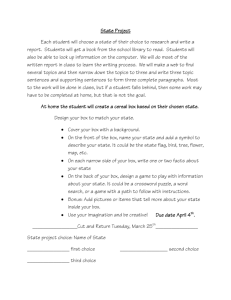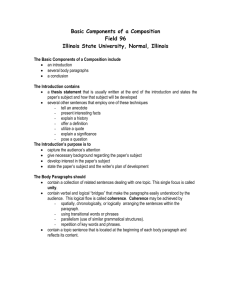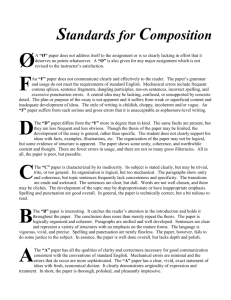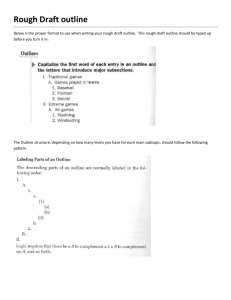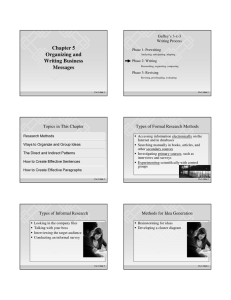Business Communication: Process and Product
advertisement
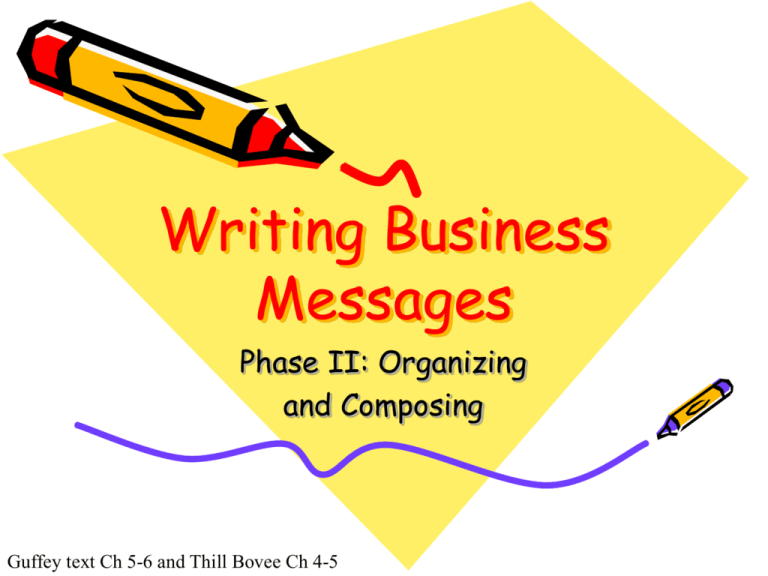
Writing Business Messages Phase II: Organizing and Composing Guffey text Ch 5-6 and Thill Bovee Ch 4-5 Know what I mean? “I would hope you find the report helpful in choosing the restaurant from which your dinner will be ordered on a goingforward basis.” - KimberlyArena, paralegal at New York City law firm, in a memo responding to a boss’s request for an analysis of the best area sushi restaurants (pulled from Know what I mean? Take 2 “There are known knowns. These are things we know that we know. There are known unknowns. That is to say, there are things that we know we don’t know. But there are also unknown unknowns. There are things we don’t know we don’t know.” - Secretary of Defense, Donald Rumsfeld, clarifying U.S. policy on the war on terror. Discussion • In what ways is business writing different from the academic writing you do in your other classes? • Why are short sentences and paragraphs recommended for business writing? Audience Analysis Determines Organization If pleased If mildly interested DIRECT PATTERN Good News or Main Idea If neutral Audience Analysis Determines Organization If displeased or disappointed If unwilling or uninterested INDIRECT PATTERN Bad News or Main Idea If hostile Direct Approach • Opening – States main idea directly • Body – Provides necessary details • Close – Uses a cordial tone that emphasizes good news or states a desired action Common Problems • Taking too long to get to the point • Including irrelevant material • Lacking coherent train of thought (unorganized, stream of consciousness) • Lacking logical support for ideas • Leaving out necessary information Drafting - Discussion Communication Matters, “The Write Stuff” – Are you a “plunger” or an “outliner”? – What are the pros/cons of each method? Drafting 1. 2. 3. 4. Outliners Complete audience analysis Create an outline of your message Use outline to create topic sentences, bullet points, etc. Address flow by adding connecting phrases in intro and at end of paragraphs as needed Plungers 1. Complete audience analysis 2. Get your thoughts down on paper 3. Use your notes to create an outline, reorder thoughts, delete unnecessary details and tangents 4. Add topic sentences, bullet lists, connecting phrases Effective Sentences Effective Sentences Discussion Communication Matters: “Write Stuff” and “Word Crunching” • What recommendations are similar between the two articles? • What are the differences? Creating Effective Sentences 1. Use short sentences. 2. Emphasize important ideas at beginning or end. 3. Use the active voice 4. Use past/present/future tense (avoid perfect tenses). Creating Effective Sentences 5. Use correct grammar, punctuation, spelling. 6. Use plain English (6th grade level), select clear, vigorous words 7. Avoid unnecessary words (that), trite/wordy phrases (in which), and prepositional phrases 8. Avoid intimacy and humor Resources: BA324 Style Guide & Common Mistakes Writers Make Effective Paragraphs Effective Paragraphs 1. Keep paragraphs short. Discuss only one topic in each paragraph. 2. Use topic sentences. 3. Link ideas and use transitional expressions to build coherence. 4. Use highlighting to improve reader accessibility. Effective Paragraphs Linking Ideas to Build Coherence • Repeat or rephrase main idea. “Our philosophy holds that every customer is really a guest. All new employees to our theme parks are trained to treat guests as VIPs. These VIPs are never told what they can or cannot do.” Effective Paragraphs Linking Ideas to Build Coherence Use a pronoun with a noun for clarity and coherence “All new park employees receive a twoweek orientation. This training includes how to maintain enthusiasm.” “New hosts and hostesses learn about the theme park and its facilities. These facilities include telephones, food services, bathrooms, and attractions.” Effective Paragraphs Linking Ideas to Build Coherence • Dovetail sentences – connect the idea at the end of one sentence with the idea at the beginning of the next. “Knowledge of administrative offices and internal workings of the company ensures that staffers will be able to serve guests fully. Serving guests is our number one priority, and we design all employee training with this primary goal in mind.” Effective Paragraphs Using transitional expressions for coherence • additionally • also • as a result • for example • in other words • therefore Effective Paragraphs Apply graphic highlighting • • • • Letters, such as (a) and (b) Numerals, like 1, 2, and 3 Bullets, like w Headings and print options • • • • • CAPITAL LETTERS underscores boldface italics font size Format See Class Web Site: • Assignment Instructions • Memo/E-Mail • Letter End 4-17
